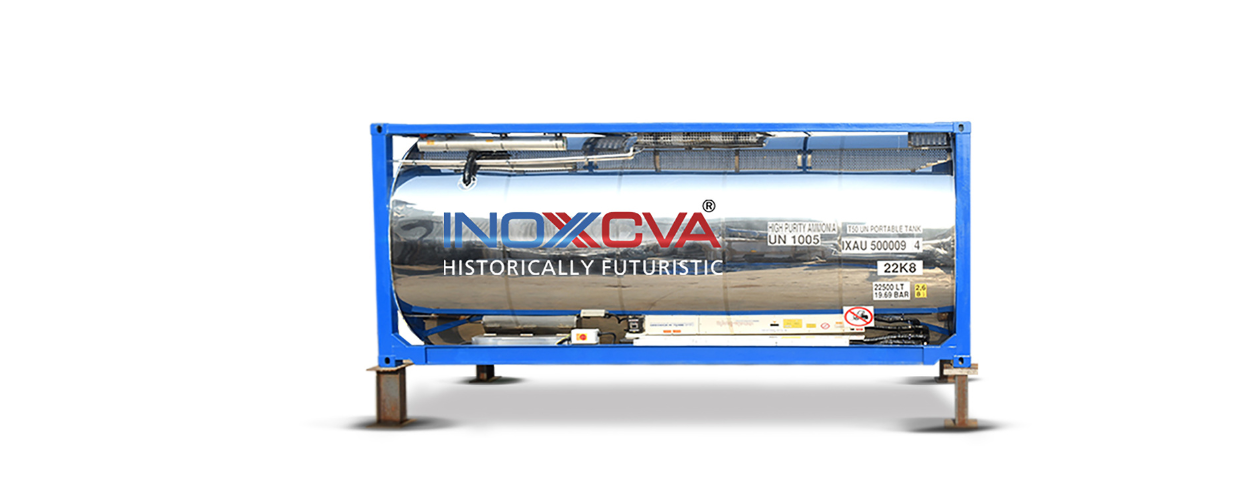When it comes to the transportation of liquids, gases, and powders in bulk, two important types of containers frequently come into play: ISO Containers Tank and Cryogenic Storage Tanks. These specialized tanks play a vital role across various industries, including chemicals, food and beverage, pharmaceuticals, and energy. Understanding their functions and significance is essential for anyone involved in the logistics of transporting these materials.
Let’s break down everything you need to know about ISO Containers Tank and Cryogenic Storage Tanks in a conversational, easy-to-understand guide.
What Are ISO Containers Tank?
At their core, ISO Containers Tank are specialized cylindrical pressure vessels built to international standards set by the International Organization for Standardization (ISO). These containers are designed to transport and store bulk liquids, powders, and gases safely and efficiently. The key feature of an ISO Containers Tank is its compatibility with multiple modes of transport—road, rail, or sea—making it a truly global solution for logistics.
ISO Containers Tank are typically made from high-grade stainless steel, ensuring durability, corrosion resistance, and the ability to withstand extreme conditions. Their robust design means they can handle everything from hazardous chemicals to food-grade liquids, all while maintaining product integrity.
Types and Applications of ISO Containers Tank
There’s no one-size-fits-all when it comes to applications to ISO Containers Tank. Depending on what you need to transport, there are several types available:
-
T1 ISO Containers Tank : Ideal for wine and light liquids.
-
T11 ISO Containers Tank : Used for non-hazardous chemicals.
-
T14 ISO Containers Tank : Designed for hazardous chemicals and acids.
-
T50 ISO Containers Tank : Perfect for gases like LPG and ammonia.
-
T75 ISO Containers Tank : Specifically made for cryogenic gases.
The versatility of ISO Containers Tank means they’re used across a wide range of industries:
-
Chemical Industry : For transporting acids, solvents, and hazardous materials.
-
Food & Beverage : For bulk transport of milk, edible oils, and alcoholic beverages.
-
Petrochemicals : For fuels, LPG, and other petroleum products.
-
Oil and Gas Industry : Used for transporting oil, fuel, and other petroleum products.
-
Agricultural Industry : Used for transporting agricultural products, such as fertilizers and pesticides.
-
Pharmaceuticals : For sensitive liquid pharmaceuticals requiring strict temperature control.
-
Environmental Applications : For the safe transport of waste or hazardous materials.
Why Choose ISO Containers Tank?
The popularity of ISO Containers Tank comes down to several unbeatable advantages:
-
Safety: ISO Containers Tank are engineered to prevent leaks and contamination, even with hazardous cargo. Features like spill containment, emergency venting, and pressure relief valves are standard.
-
Cost-Effectiveness: Transporting bulk liquids in ISO Containers Tank is far more economical than using drums or barrels, reducing shipping costs and handling fees.
-
Versatility: ISO Containers Tank can carry a wide array of products, from chemicals to food-grade liquids and cryogenic gases.
-
Eco-Friendly: With reusable designs and less packaging waste, ISO Containers Tank support sustainability goals.
-
Efficiency: Their standardized size and shape make them easy to handle, stack, and transfer between different transport modes, streamlining logistics.
Cryogenic Storage Tanks: The Coldest Members of the Family
Now, let’s talk about Cryogenic Storage Tanks—a special class of ISO Containers Tank designed for storing and transporting liquefied gases at ultra-low temperatures, often below -150°C. Cryogenic Storage Tanks are essential for industries dealing with gases like nitrogen, oxygen, argon, hydrogen, and liquefied natural gas (LNG).
How Do Cryogenic Storage Tanks Work?
Cryogenic Storage Tanks are not your average container. They feature a double-walled construction with vacuum insulation between the layers. This vacuum acts as a powerful insulator, minimizing heat transfer and keeping the cryogens at their required low temperatures. The inner vessel is typically made from austenitic stainless steel, while the outer shell is coated for extra durability and corrosion resistance.
Safety is paramount with Cryogenic Storage Tanks. They come equipped with pressure-relief valves, emergency shut-off systems, and specialized piping layouts to ensure safe operation even under demanding conditions.
Why Are Cryogenic Storage Tanks So Important?
-
Preservation of Gases: Preservation of Gases: Many industrial gases must be kept in liquid form at cryogenic temperatures to remain stable and usable.
- Efficient Transport: Efficient Transport: Cryogenic Storage Tanks allow for the bulk movement of liquefied gases, which would be impossible with standard containers, through land, marine or rail
-
Safety: Advanced insulation and safety features protect both the cargo and the environment from potential hazards.
Choosing the Right ISO Containers Tank and Cryogenic Storage Tanks
When selecting an ISO Containers Tank or Cryogenic Storage Tanks, consider:
-
Cargo Type: Different tanks are designed for specific substances—choose accordingly.
-
Regulatory Compliance: Ensure the tank meets international safety and transport standards.
-
Durability and Maintenance: Look for tanks with robust construction and easy-to-maintain features.
-
Supplier Expertise: Work with a provider known for quality and innovation in ISO Containers Tank and Cryogenic Storage Tanks.
-
Material Compatibility: Ensure the tank material, whether stainless steel, carbon steel, or other material, is compatible with the product.
Conclusion
ISO Containers Tank and Cryogenic Storage Tanks have revolutionized the way industries move bulk liquids and gases. Their safety, versatility, and efficiency make them indispensable tools for modern logistics. As industries push for greater sustainability and operational efficiency, the role of ISO Containers Tank and Cryogenic Storage Tanks will only continue to grow.
Understanding the ins and outs of ISO Containers Tank and Cryogenic Storage Tanks is key to optimizing your supply chain and ensuring the safe, cost-effective movement of your products—no matter how challenging the cargo.

